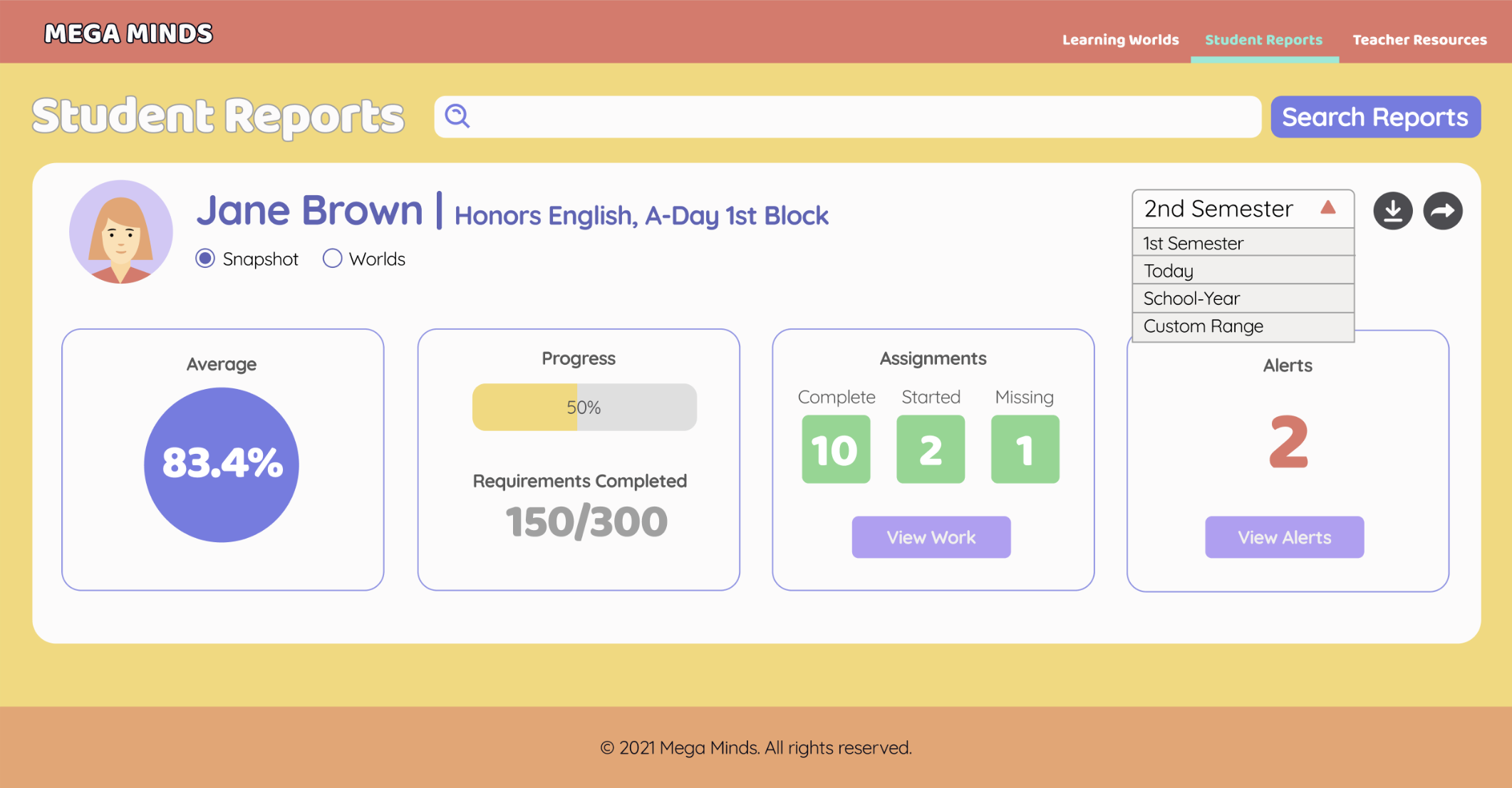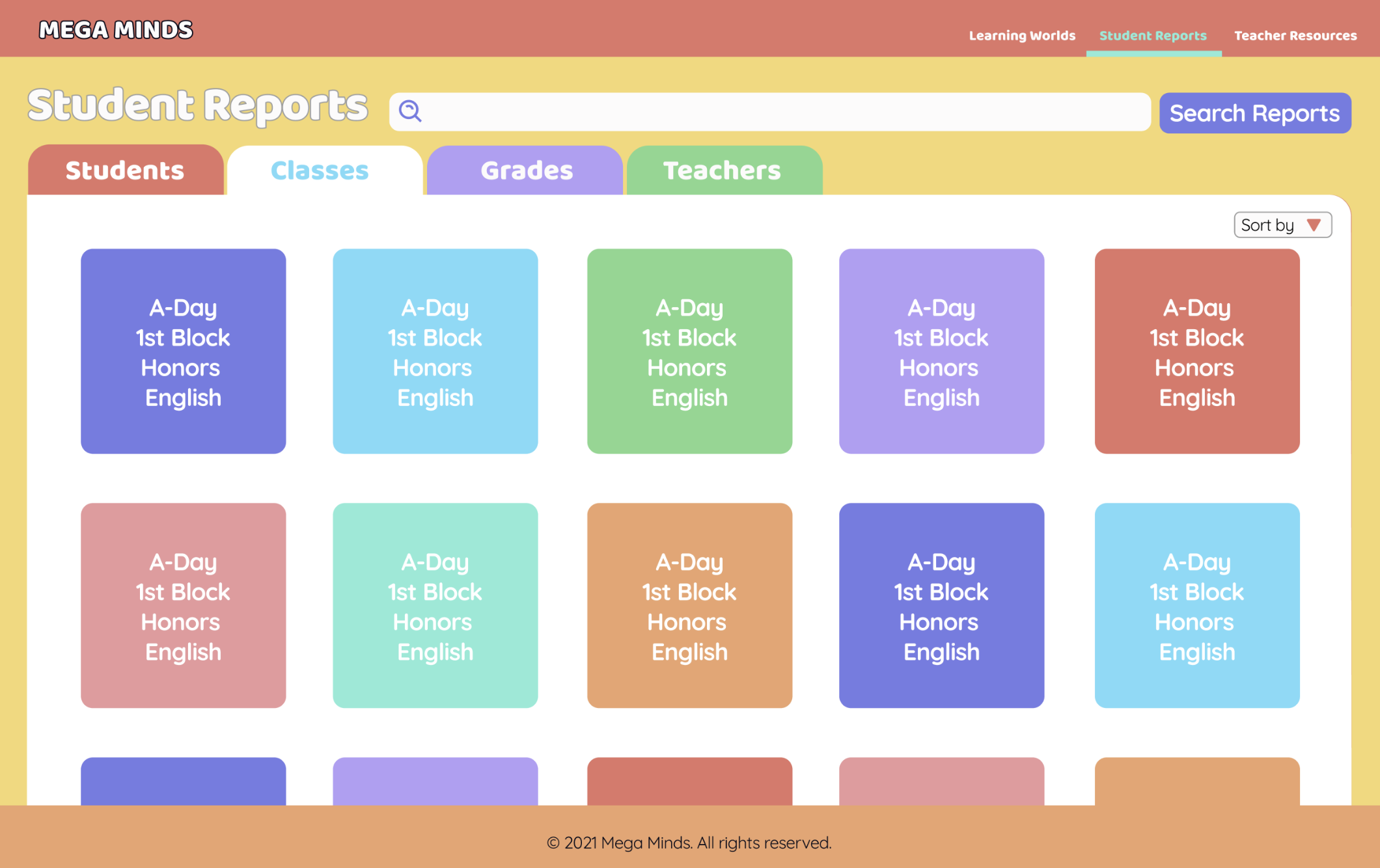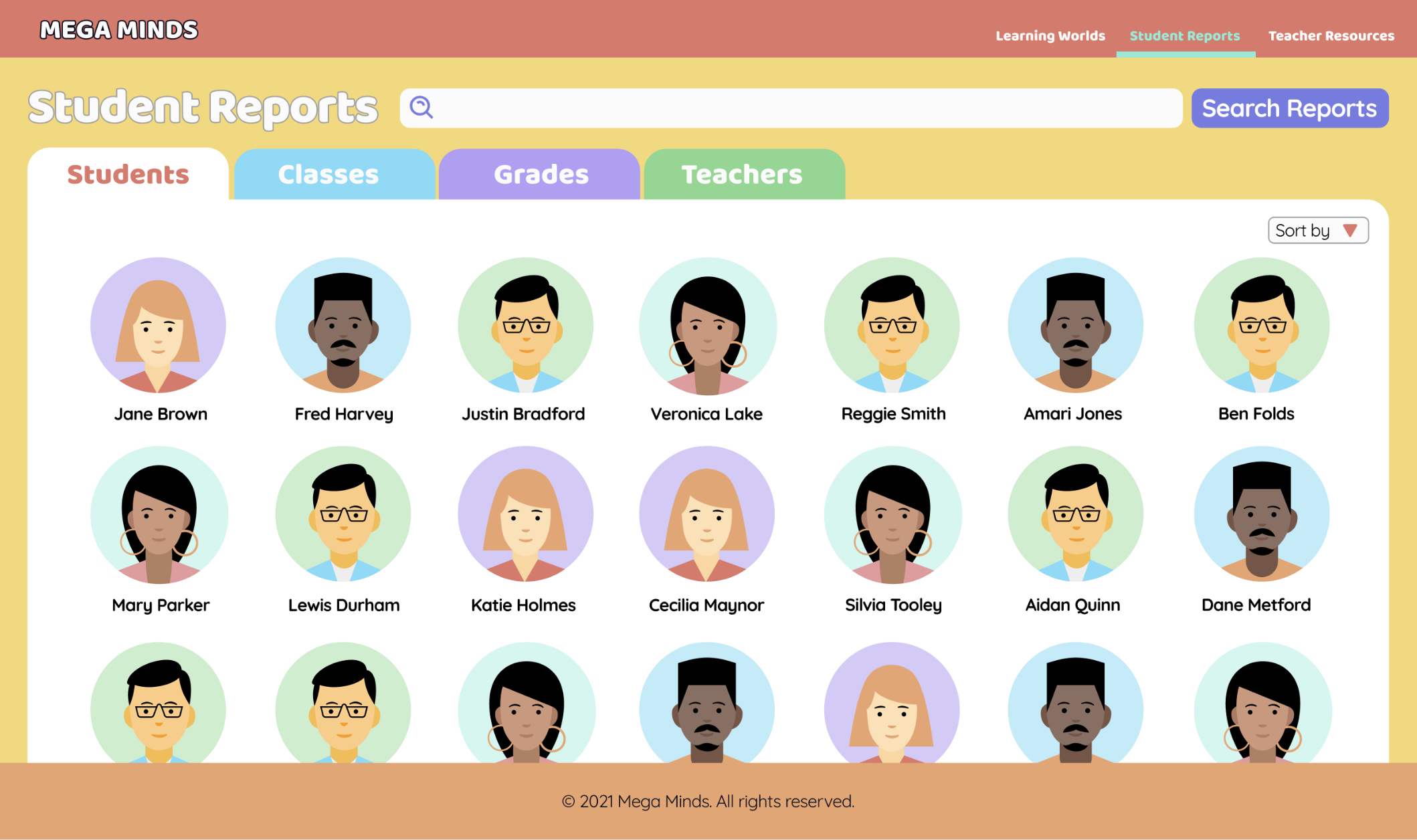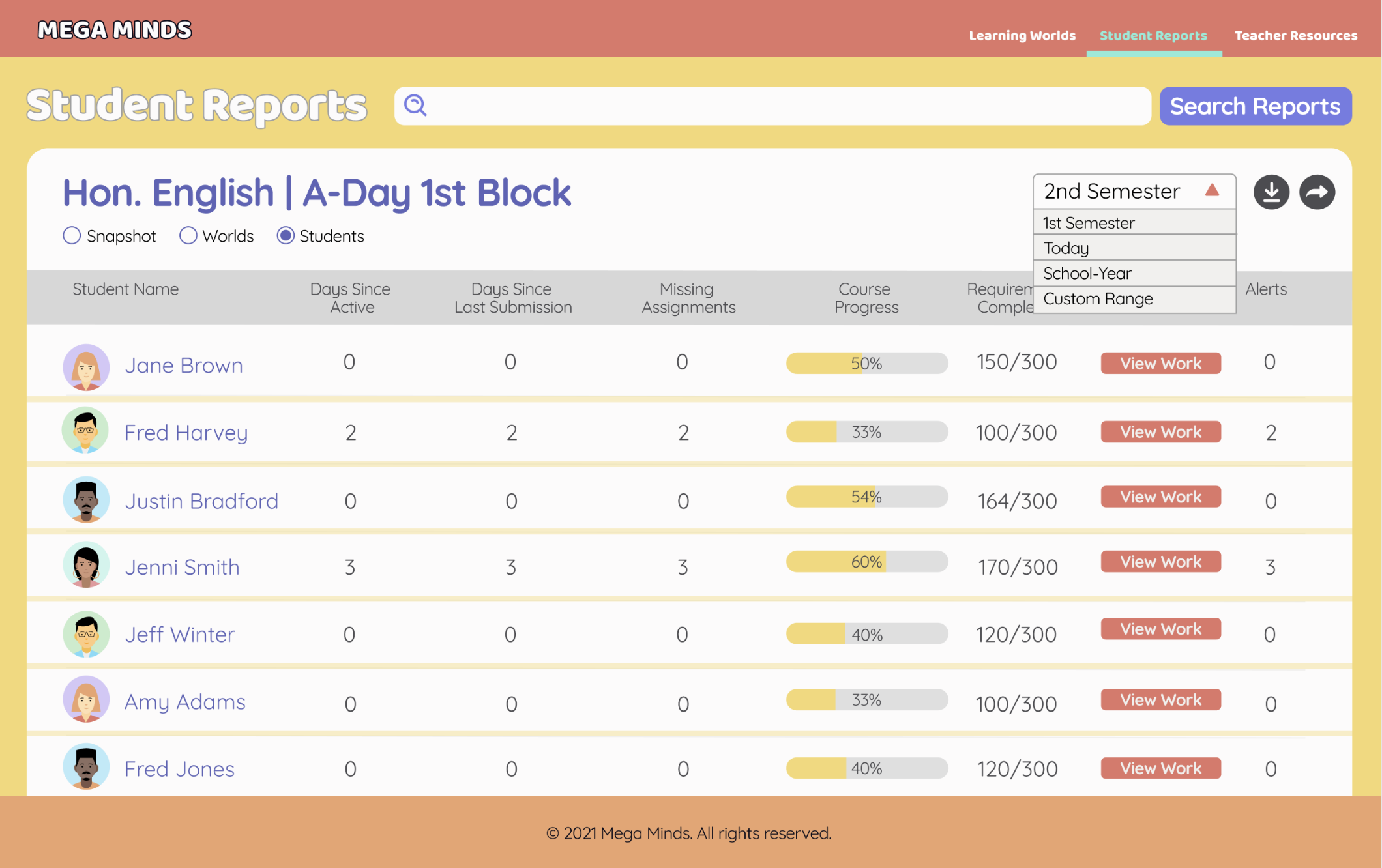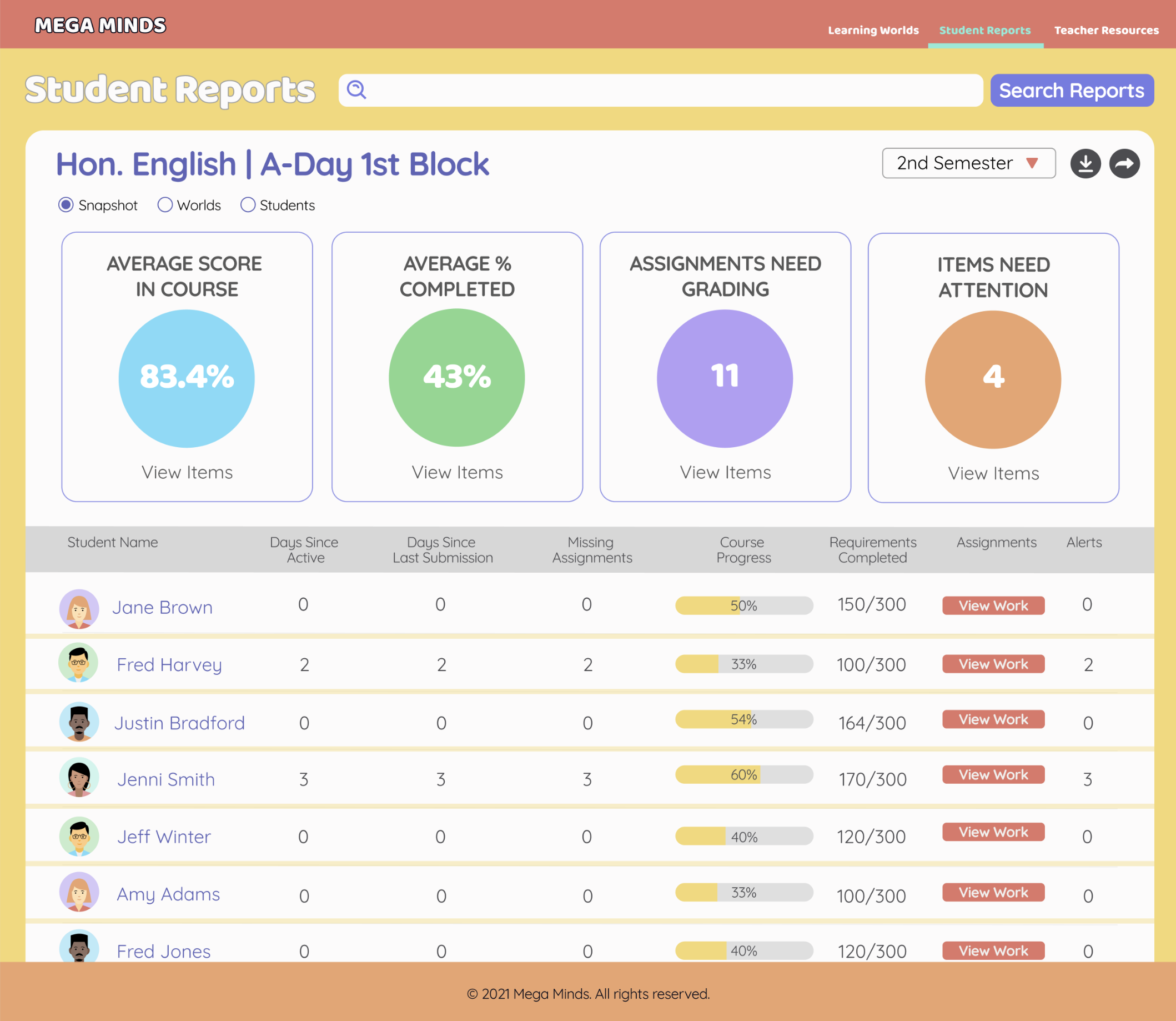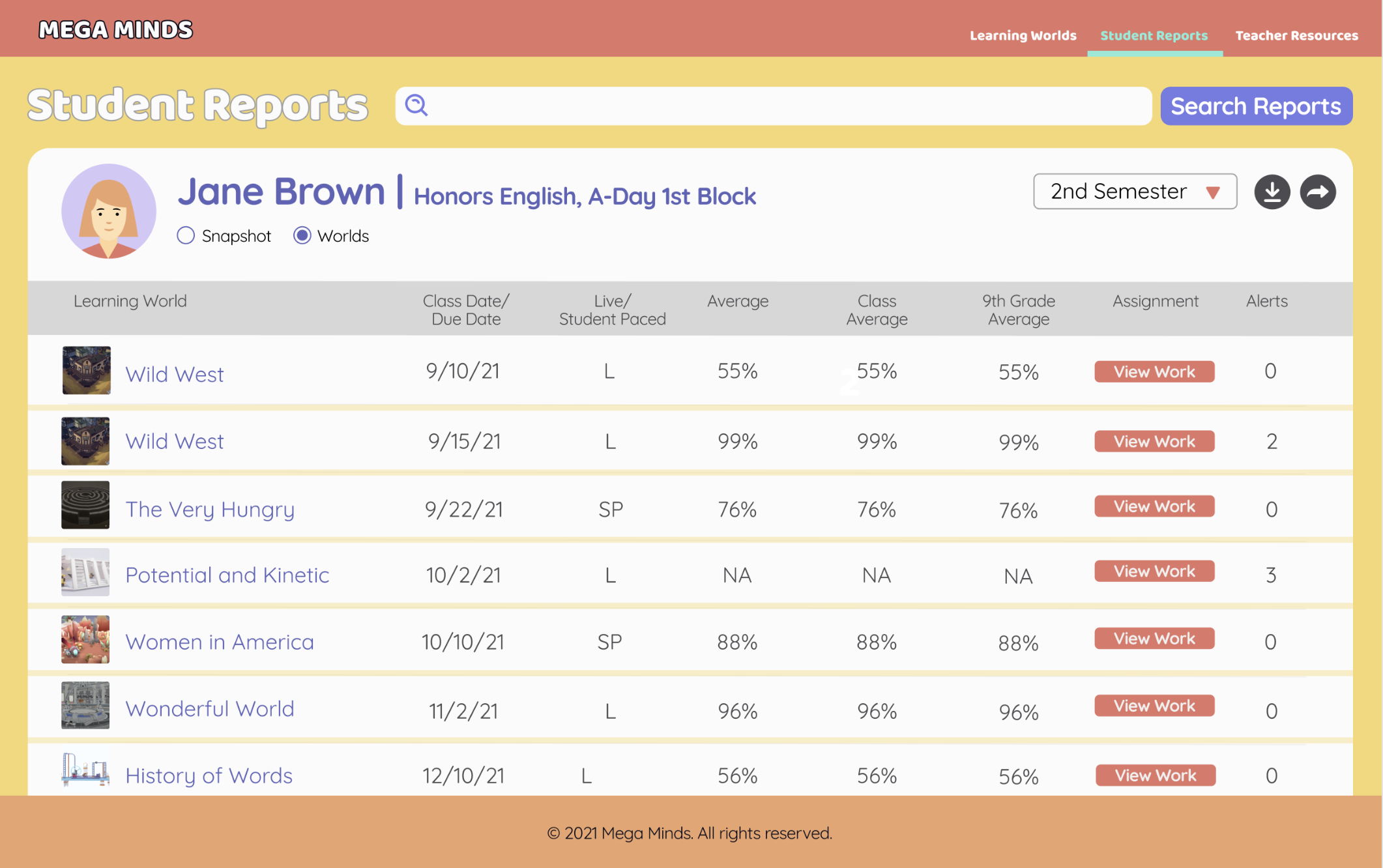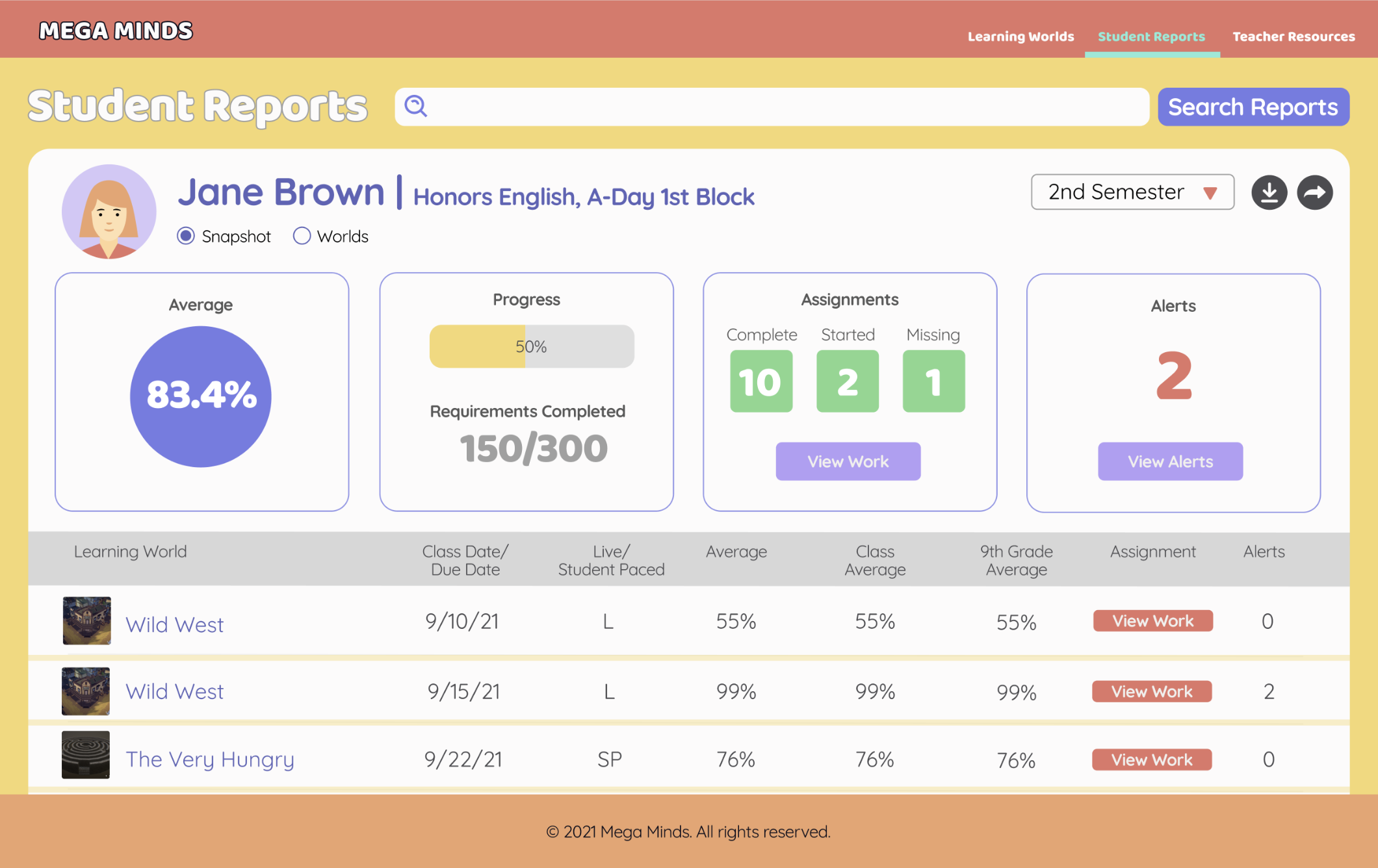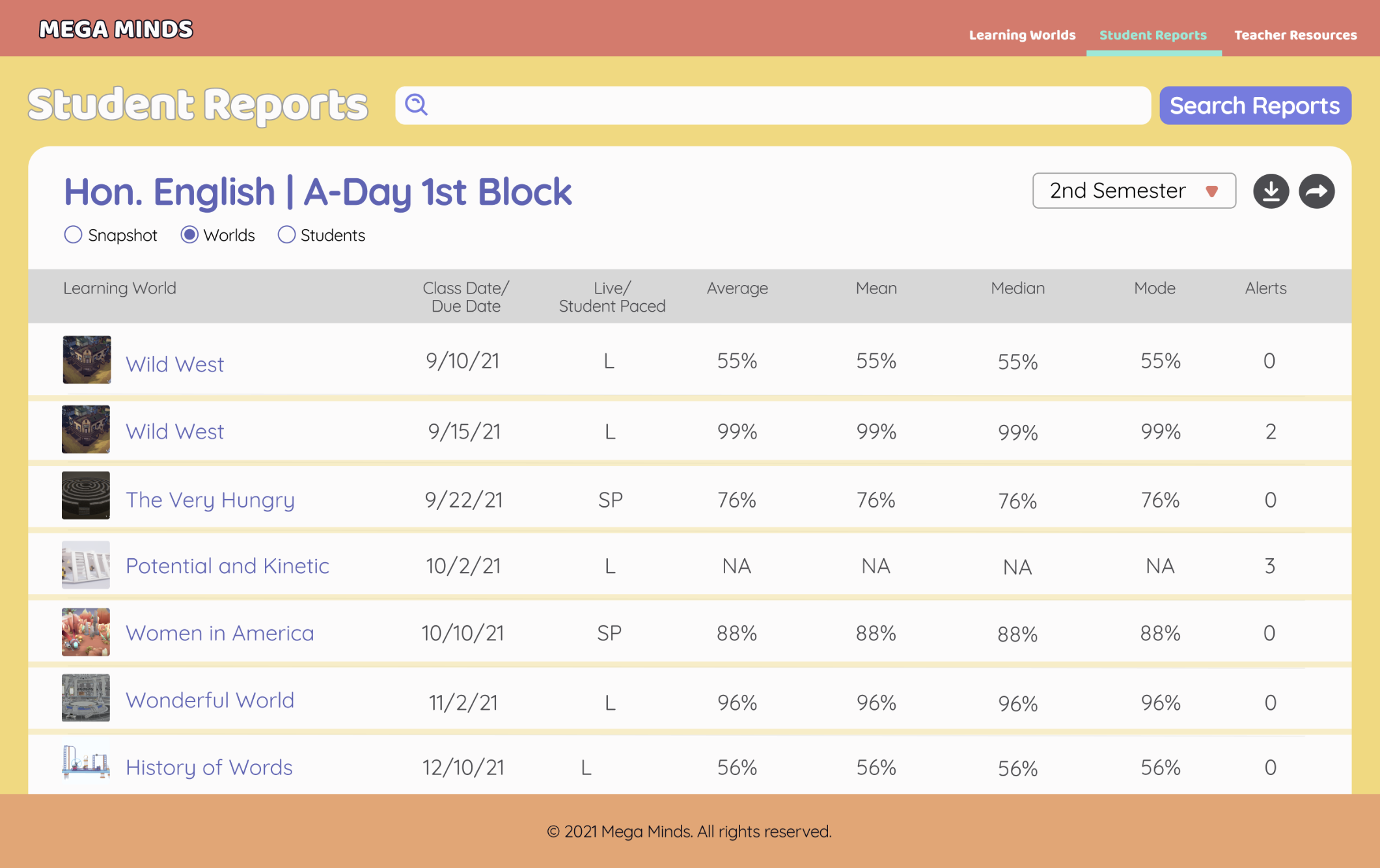Mega Minds.
This K-12 browser-based learning platform was the brainstorm of founders Eric Tao and Maureena Mark. The need for an EdTech product with the fundamentals of inclusivity, accessibility and active engagement, became even more important with the recent increase in remote learning. Mega Minds allows students to participate in collaborative learning sessions in remote or in-person capacities through virtual learning worlds. The demo version of the virtual world platform was ready. In our initial meeting the next steps were determined and a Project Map was created. It was time to develop the User Experience.
2 teammates, 12 weeks, go!
The Problem.
The Mega Minds team of two had designed a new platform to help teachers engage their students, but teachers are already overburdened and have little time to learn about and master new products.
CHALLENGE:
Create a simple and effective dashboard for teachers to plan and build inclusive, interactive and engaging lessons.
Research begins.
Being an educator herself, Maureena had some pretty good ideas, but we needed to learn more and back our decisions up with research. We focused on the teachers—we needed to understand their wants and needs when considering a new tool for engagement. Will they be interested? Can we make it simple enough? We began our discovery research by meeting with four of them.


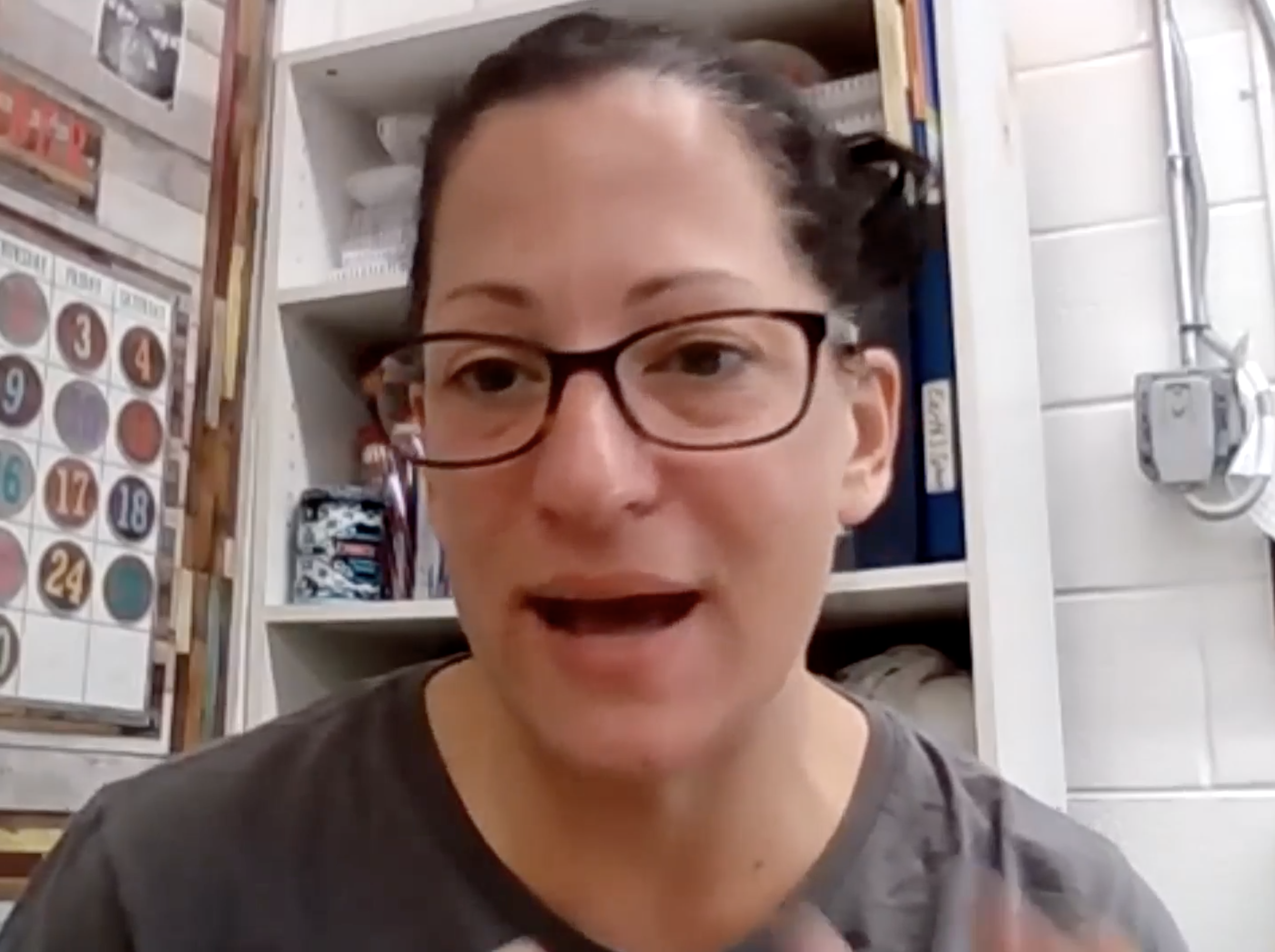

INTERVIEWS
We conducted interviews via Zoom and our questions were focused on finding out more about the daily lives of our users. What were their favorite things about teaching? pain points? What tools did they use? How much time were they willing to spend learning something new?
USABILITY TESTS
We also watched them work in some of the existing EdTech programs. Some were new to them and others they were already familiar with. We learned what they liked about the existing platforms and where there were gaps.
The teachers have spoken and here is their story.
Our users have different levels of experience, come from different backgrounds, and teach a variety of ages and subjects—but they all have one thing in common. They LOVE to teach. They enjoy working with kids and are motivated by the opportunity to change students’ lives. They derive joy from accompanying children on a journey of discovery, but they are often overwhelmed. The job of an educator requires so much more than teaching that there is very little time left for the part of the job they love. After listening and observing we used various methods to assimilate the data and find patterns.
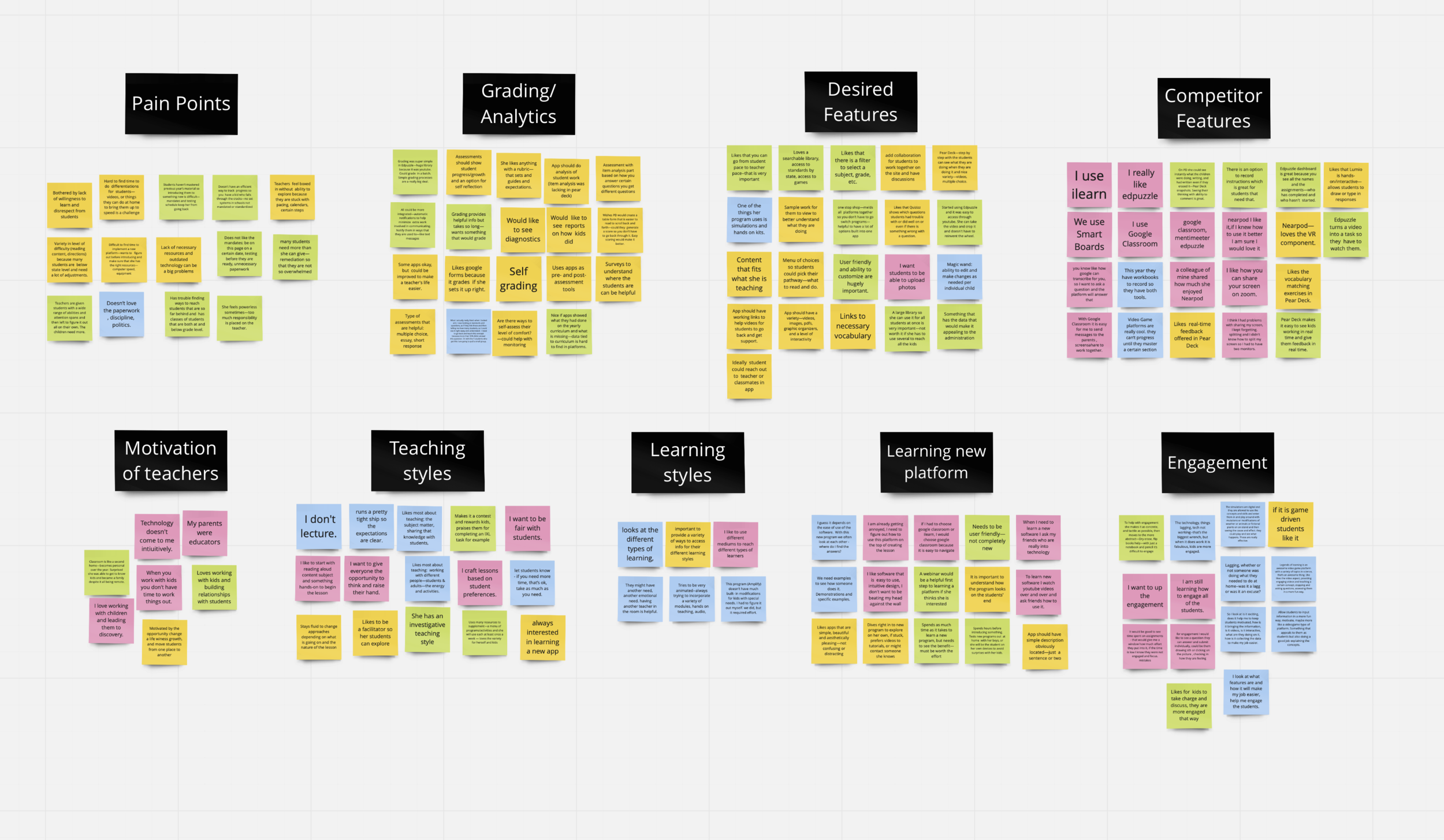
Affinity Map
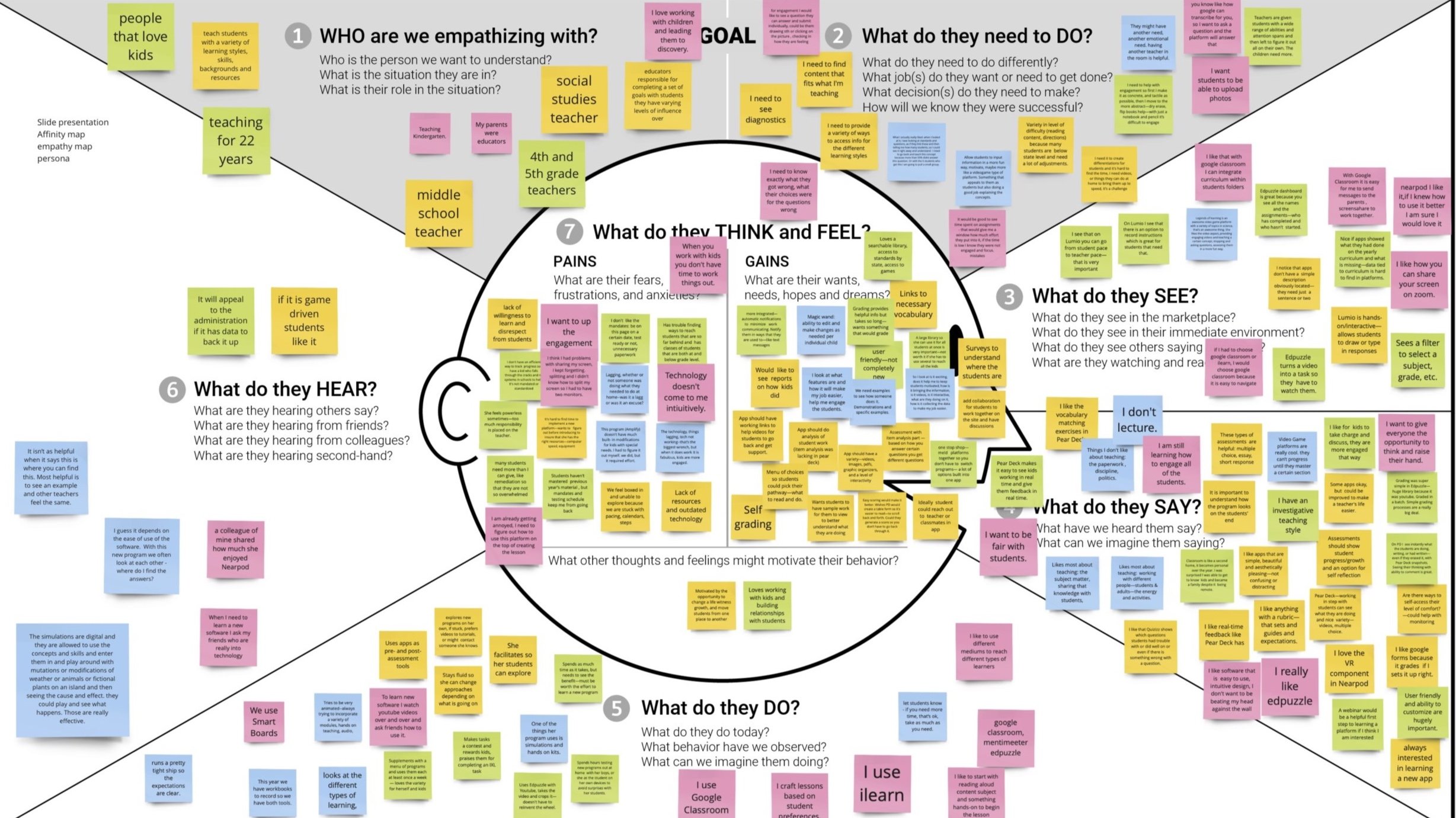
Empathy Map
Key insights.
We reviewed interview recordings and notes to gather key insights from our teachers. Our team worked together to record these findings on sticky notes which were then grouped into the following categories: Pain Points, Grading/Analytics, Desired Features, Competitor Features, Motivation of Teachers, Teaching Styles, Learning Styles, Learning a New Platform, and Engagement. With the our time limitations we narrowed our scope to address three of these categories.
PAIN POINTS
Teachers find it challenging to prepare engaging multi-level classes and need a variety of tools to choose from with the ability to customize and filter by subject, grade and other criteria.
“I want to be fair, I want to give everyone an opportunity to think and then raise their hand. how can I come up with a lesson plan like that?”
Danielle
LEARNING STYLES
Teachers need a platform with different mediums and approaches including interactive activities and modern technologies to accommodate different learning styles.
“I’m always trying to incorporate a variety of modules like hands on teaching and audio for the different types of learning.”
Cory
MOTIVATION
Teachers love working with children, but could benefit from more automated tools to make their job easier such as additional analytics and grading resources.
“I love being instrumental in moving students from one place to another and witnessing their growth”
Cathy Ann
How might we . . .
provide a variety of tools so that teachers can easily prepare engaging classes for all students?
help teachers accommodate different learning styles?
streamline analytics and grading to make teachers jobs easier and help them find more time to focus on what they love about teaching?
Visualize.
It is clear that the challenges teachers face are only partially addressed by existing products and teachers will indeed be interested in learning a new effective platform if it is simple and user-friendly enough to make them want to explore. User Journeys and User Flows helped us visualize the process.
User Journey
User Flows
Design.
Test. Assimilate. Iterate.
Ready to roll.
